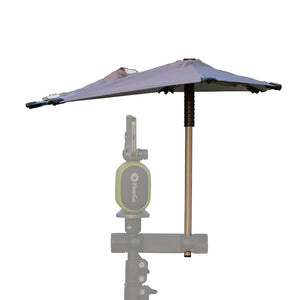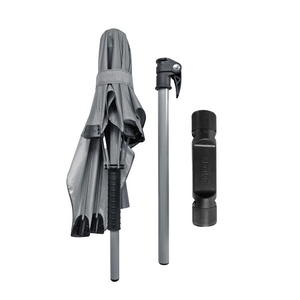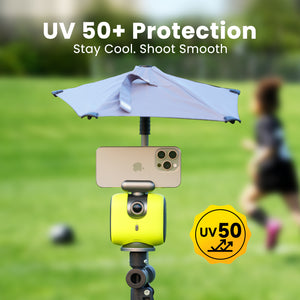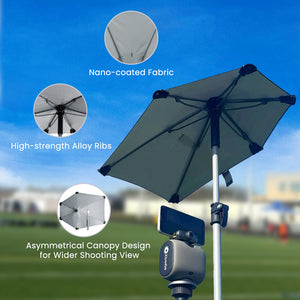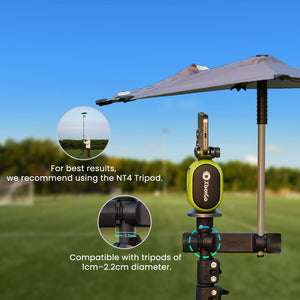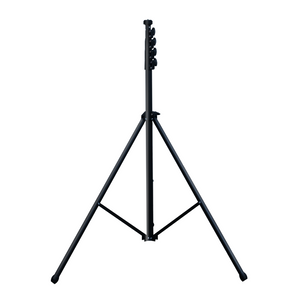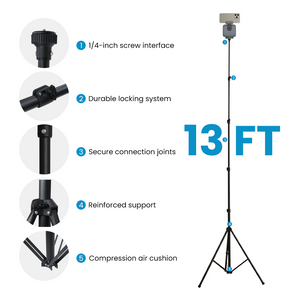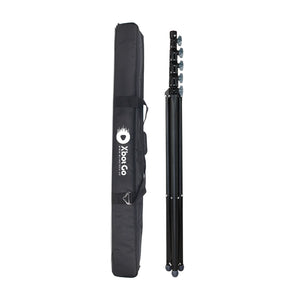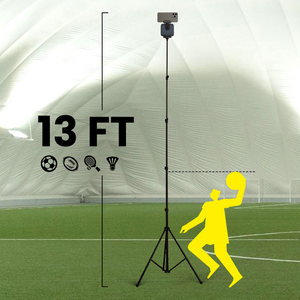XbotGo Chameleon AI Sports Camera
5 Pro Tips for Recording Hockey Tournaments Like a Broadcast
Video footage of hockey tournaments is essential for coaching analysis and fan engagement. However, recording clear, detailed videos can be quite complicated, and there are many challenges that you must try to get around.
Speed is a persistent challenge, considering that gameplay can reach 25+ mph. The logistics of recording multiple games across different tournament days can also be overwhelming. The cold and noise can also be a problem, and that’s not all.
Fortunately, the situation is not helpless. Take a look at the following five techniques to help you transform that chaotic tournament recording into professional-quality video documentation.

5 Essential Hockey Tournament Recording Techniques
The different challenges that arise when recording hockey tournaments require different solutions. It could be as simple as finding a better, more strategic position for your camera. However, it could also entail getting a new, better camera altogether.
Placing the Camera in the Most Strategic Position
A good sports camera like the XbotGo Chameleon helps eliminate many challenges. However, you still must position it strategically to cover as much of the rink as possible without obstructions.
Unfortunately, ice hockey rinks pose several unique positioning challenges. The glass barriers create glare from reflection. They also cause optical distortion if they are not perfectly flat, and any dirt or smears on the glass ruin the video quality.
Additionally, while the limited elevated seating affords some intimacy, it severely limits coverage. You can’t follow the puck or see plays developing across the ice since you can’t see over the players. The ice is yet another problem because it causes glare.
As such, you should find a good position to place your camera. However, remember that there are certain areas with restricted access.
Try to climb up the stands as high as you can get. You can see over the players’ heads from here to see the entire game development. This position also eliminates the issue of distortion and reflection from the glass barrier.
Remember to position your camera directly horizontally to the red line. Proper horizontal placement is inevitable if you want to capture a symmetric view of the offensive and defensive zones. You should also have a medium-to-wide-angle lens for broad coverage.
Alternatively, you can position the camera behind one of the goals. It shouldn’t be directly behind the goal but rather at one of the corners. Additionally, it should sit just above the ice. A medium-angle lens will do when recording from this position.
However, the area behind the goal is usually restricted. You may therefore need to get authorization before placing your camera there. You’ll also require safety equipment for the camera.
Notably, the positions behind the goals are mostly ideal for capturing play development in the offensive zone, high-energy shots, and 1-on-1 player battles. As such, they are only ideal for your secondary camera; your primary camera should still be up in the stands.

Adequate Preparation for Multiple Game Coverage
Recording multiple games in one day or even over the course of a few days can be a logistical challenge. Most notably, it would mean having to set up and reposition your camera every time the venue changes.
It’s also important to keep a close watch on the battery and all the equipment that you’d be carrying around everywhere. Speaking of which, you should find a way to carry and store your equipment in an organized design for quick set-ups.
It can all feel a little overwhelming and confusing, especially if you don’t have a plan. Mix-ups can compromise your recordings or even make it impossible to record. This is why you should have a strategic workflow optimization.
Setting up your camera after every change in venue can take up a lot of time. It can also feel monotonous after a while, leading to mistakes. This is where a pre-built camera kit with slots for all your equipment comes in handy, as quick access to your equipment means quick, easy set-ups.
Batteries are one equipment you ought to watch closely. You should have replacements to keep the camera running when the primary ones run out. Notably, it helps to have designated slots for fully charged batteries and another one for depleted batteries to avoid mixing them up.
Besides batteries, it’s also wise to inspect the other equipment regularly. For example, check your memory cards always have enough storage space. Is the tripod stable? Also remember to check whether the lenses are clean. Consider getting a checklist to keep track of everything.
Keeping all equipment in optimal condition will help maintain recording consistency and video quality between different tournaments. However, you’ll also need to set up dedicated settings that you can activate for different camera positions, lighting, and other scenarios.
Fast-Paced AI Tracking in Real Time
Hockey gameplay is fast-paced. Players skate at speeds of up to 25 mph and change directions at the blink of an eye. The puck moves even faster and changes directions even more often. Indeed, keeping up can be challenging.
In addition to the fast-paced action, many visual aspects of the game also complicate video recording. For instance, color contrast; the ice and board are white, and players are dressed in similar colors. Moreover, there is a repeating pattern on the cage on the glass.
Ordinary smartphone cameras are not designed to handle such challenges. To this end, you’ll notice hindrances like the footage blurring when you try to focus on fast gameplay. The camera also loses focus too often because of the color contrasts and quick movements.
Besides, many ordinary cameras are not designed to capture wide-angle footage. This is a limitation, as you’ll need to maintain wide rink coverage, all of which follows the action. Why? Hockey is a strategic game, and context is a great concern to fans and coaches alike.
Recording wide-angle footage also helps solve the ultimate challenge in hockey videography: tracking puck movement versus player positioning simultaneously.
On the one hand, strategy is integral to the game, and it all comes down to player positioning. On the other hand, the puck is the center of the action. As such, wide rink covers captures all the action simultaneously. However, tracking is still a separate issue.
For coaches, video recordings of tournaments are crucial for analysis and teaching. Missing key plays thus compromises the analysis. Worse yet, it hinders player development, as training is based on the compromised analysis.
Manual recording and tracking simply can’t match up to all these challenges. Thankfully, one sports camera can: XbotGo Chameleon.
The camera’s XbotVision 2.0 AI algorithm will solve all your tracking challenges. It can track the puck and focus on players simultaneously. Moreover, it can track individual players through jersey number recognition.
With a 1200 wide-angle lens, the camera captures all the action from one end to another. You therefore don’t have to reposition the camera every time the action shifts to the other end of the rink.
Most importantly, you can see everything happening on the rink for maximum context and accurate analysis. Second, it frees you up so you can focus on the action and attend to other activities.
Accuracy and precision also go hand-in-hand with quality, as a dual-camera 4K system captures professional, broadcast-quality footage. And, with an 8-hour battery life, the camera will run long enough to record multiple hockey tournaments.
Setting the Audio Systems for Optimal Sound Clarity
Audio quality is just as crucial as video quality in hockey tournament footage. Indeed, poor sound quality can limit coach commentary and game analysis.
Unfortunately, ice hockey rinks have two sound setbacks. First, they create echo. Second, fans often make a lot of noise. As such, it is difficult for the coach to record clear commentaries for later reference when recording.
Rink acoustics won’t change, but there are several ways to get around the challenges. Getting an external microphone is the most efficient solution. More precisely, look for a directional microphone that can focus on particular zones and sound sources.
The placement of your external directional mic also helps with crowd noise management. Placing it as close to the mouth as possible in a direction facing away from the crowd helps filter out most of the noise.
Certain audio recorders also have limiters. If yours has one, activate it to avoid peaking and distortion from sudden crowd outbursts. You can even try using physical barriers like your board to block out some of the noise.
You can also try out different commentary recording methods. Go wireless for more natural recordings or use a hand-held dynamic microphone for more intentional recordings. You could also try both methods simultaneously.
Of course, it’s impossible to solve all the acoustic challenges on the rink. However, you can still polish up your audio through post-game edits and enhancements.
Most importantly, you need noise reduction software to filter out the unwanted noise. You should also equalize the various frequencies, compress the volume to even it out, and finally use a loudness meter to standardize the level of your commentary.
Extreme Cold & Equipment Performance

Like a giant refrigerator, temperatures in the rink range between 450F and 600F. The cold is bad for electronic gadgets like your camera.
Certain equipment is more vulnerable to the cold. Batteries in particular cannot hold charge effectively in cold temperatures, and you may notice them drain faster. Additionally, the lens can fog up, making the footage blurry.
The cold may seem inescapable. However, there are various clever ways to protect your equipment and maintain optimal recording performance.
Your batteries won’t drain as fast if you keep them warm. Sure, they’ll quickly become cold when you take them out of the toolkit, which is why you should rotate them regularly. You’ll also need an external power source like a power bank to keep idle batteries recharged.
It is also advisable to store all equipment in an insulated case to protect against humidity and moisture. You can also apply anti-fogging chemicals on the lens and screens to prevent condensation.
Controlled acclimatization is also a consideration post-game. The rule of thumb is to wait a while before powering on your equipment after leaving the rink. This is because condensation that may have formed inside the equipment can short the circuits.
Please note that these solutions aren’t fool-proof. As such, it is also wise to have backup equipment that you can use in case the current ones fail. Ultimately, getting ruggedized equipment is the best solution for the cold, so go for gadgets rated for tough conditions.
Final Thoughts
These five techniques can take the stress out of your hockey tournament recording experience. They can give your documentation a professional appeal.
AI-powered tracking technology is fundamental because it eliminates most of the challenges you face. This is what the XbotGo Chameleon sports camera has to offer. It also provides wide-angle rink coverage, long battery life, quick set-ups, and many other advantages.
Indeed, the XbotGo Chameleon is a game-changer, and using it alongside these other techniques will make the entire experience easier and more efficient.Explore it to discover all its features and potential applications.
XbotGo Chameleon AI Sports Camera
Capture every moment with AI-powered tracking. Perfect for coaches, parents, and athletes who want seamless footage without manual filming.







 Soccer
Soccer Basketball
Basketball Ice Hockey
Ice Hockey Rugby
Rugby












